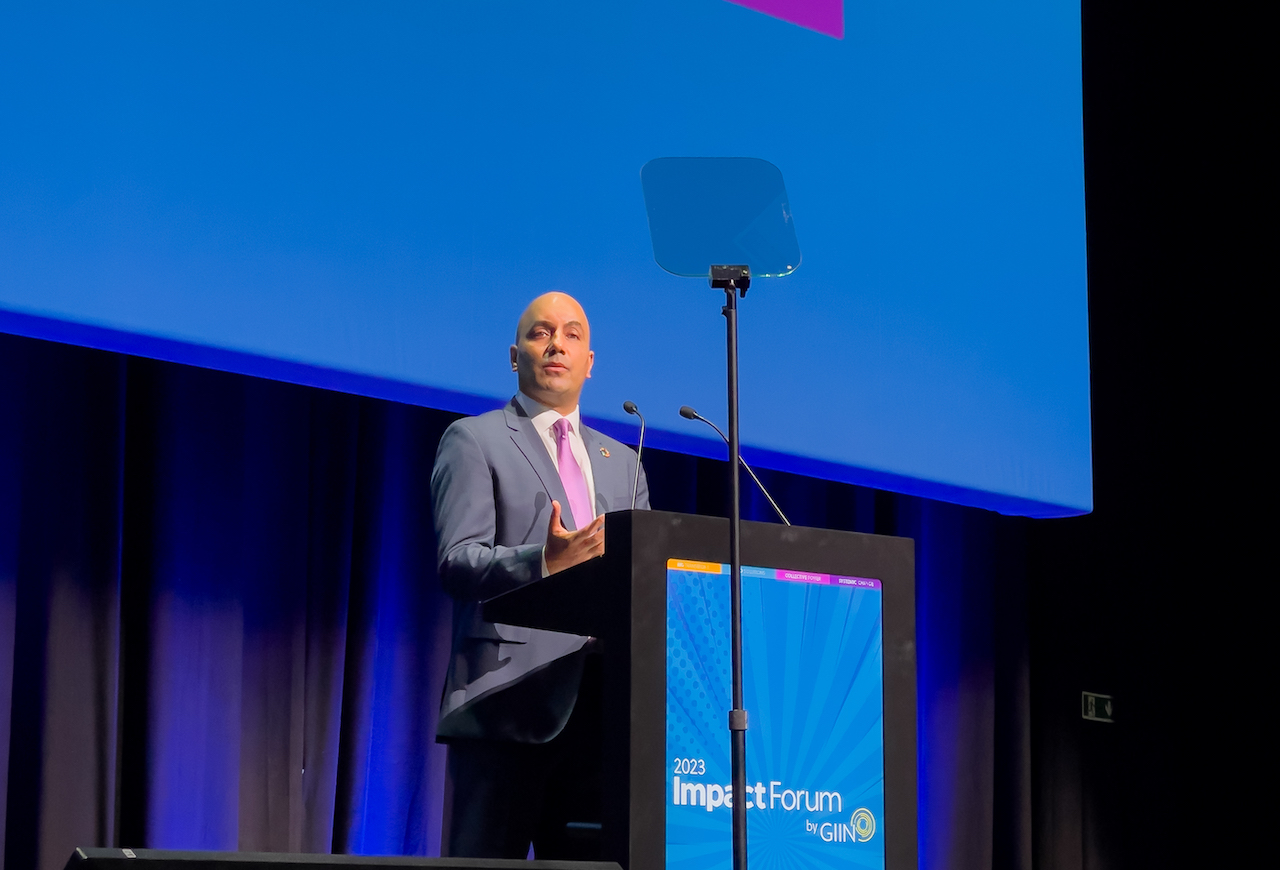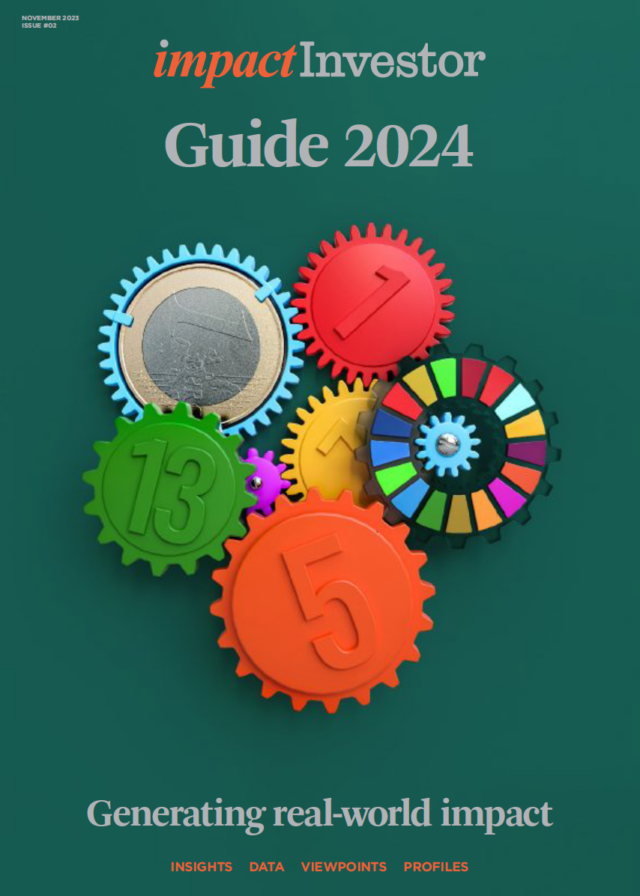The GIIN’s CEO discusses the need for all investments to be viewed through an “impact lens”, and how the organisation is helping to make it happen – from the Impact Investor Guide 2024.

Ian Lewis (IL): At the recent GIIN Impact Forum in Copenhagen, you explained how the organisation is encouraging institutional investors to move beyond niche impact investing and to consider impact across their entire portfolios. Is that something many investors are already considering?
Amit Bouri (AB): Applying impact as a lens across a whole portfolio is incredibly powerful in terms of the volume of capital it can unlock, but it is even more powerful in terms of the shift in thinking it represents, because our vision is that impact becomes part of all investing. It was very encouraging to hear representatives of large institutional investors at the GIIN Impact Forum saying they were either committed to looking at impact holistically within their portfolios now or planning to shift to that position in the near future. Whether it’s cash management strategies, private debt, listed equities, or private equity and venture capital, we’ve been excited to see many investors begin by applying impact in one asset class and then expanding this approach to other asset classes. We want impact thinking to stretch across the financial system. There can’t just be a subset of investors focused on addressing climate change or inequality or nature loss, we need all investors to do so.
IL: How is the GIIN supporting this drive to broaden the adoption of impact?
AB: In support of our efforts to put entire portfolios through an impact lens, we have initiatives including the GIIN Impact Lab, which is focused on developing impact performance benchmarks and other analytical tools to help investors become more effective at achieving impact results.
We are also very actively engaging with institutional investors to develop educational programmes and resources to help them understand how to deploy capital at scale into impact investments. We host the Impact Principles, which is another way that investors can demonstrate how they’re embedding impact into their investment management process. And our IRIS+ system is now widely accepted by the industry as the standard for measuring and managing impact.
IL: Are there any new sources of impact investment you think could be unlocked?
AB: We’re always looking at opportunities to activate additional pools of capital. A new area for us is our work with corporates, because, as impact investors, they have tremendous potential in terms of scale. Companies have a whole variety of financial assets, including treasury assets and beyond, which they can activate for impact. Companies seeking to make sustainability goals part of their corporate purpose can think not only about the supply chain, but also about their financial management. We’re only seeing the tip of the iceberg in terms of the impact potential, but I think it could be huge. In fact, we have a corporate impact investing working group and have published a paper and case studies, looking at the corporate impact investing landscape.
IL: Are there areas of sustainable development that require more attention than others from impact investors?
AB: There is no sector where we feel there is sufficient impact investment activity to date. To take renewables, we see a lot of activity in certain sectors like offshore wind or solar, but we also see huge gaps in many countries that already have a lot of renewables, which still have more to do to make them a systemic part of their energy infrastructure. Then, when we think about the billion people who still don’t have clean energy access, it is a huge area for impact investment to help drive access to reliable and affordable clean energy.
That’s a sector that has tremendous momentum, a lot of visibility on the global stage, from the private sector and governments, but we still see a huge need for greater investment, specifically with a focus on driving positive impact through those investments, making sure the needs of underserved communities are met.
IL: A lot of impact measurement uses the UN Sustainable Development Goals as reference points. But many of these goals for 2030 are unlikely to be met. Do we need a new framework for measuring impact?
AB: I continue to think the SDGs remain a very powerful framework. The idea of all the world’s countries coming together to establish a framework and a set of goals is really important.
It is discouraging to see that insufficient progress has been made towards meeting the SDGs, and we need to channel energy and motivation to be more ambitious. But it’s important that the SDGs set a bar for where the world needs to be, because people need a goal to strive for. And it’s important for the impact investing space to continue to advocate for these goals.

This article is part of the editorial content of the Impact Investor Guide 2024. You can download a digital copy of the guide here.





